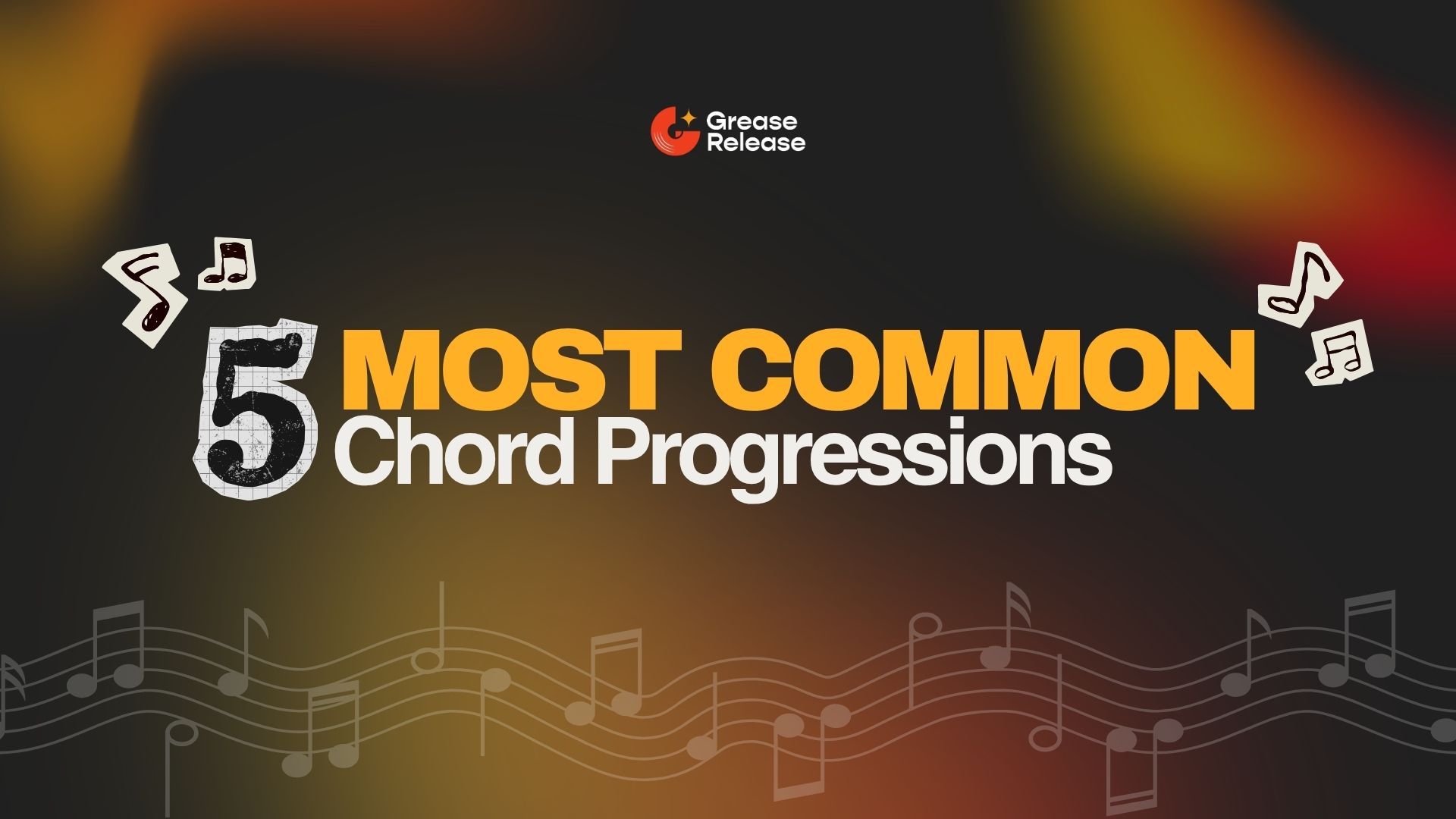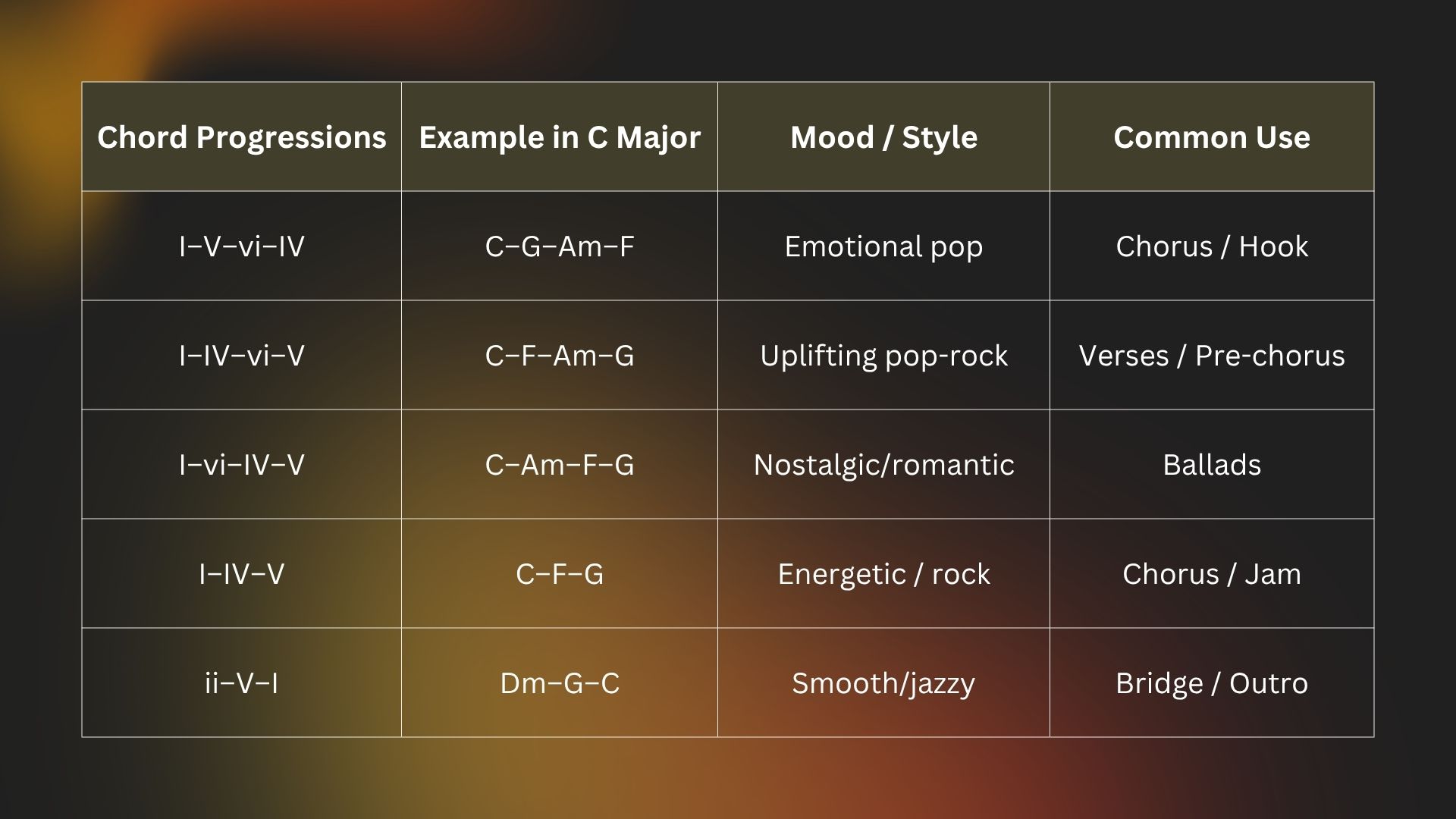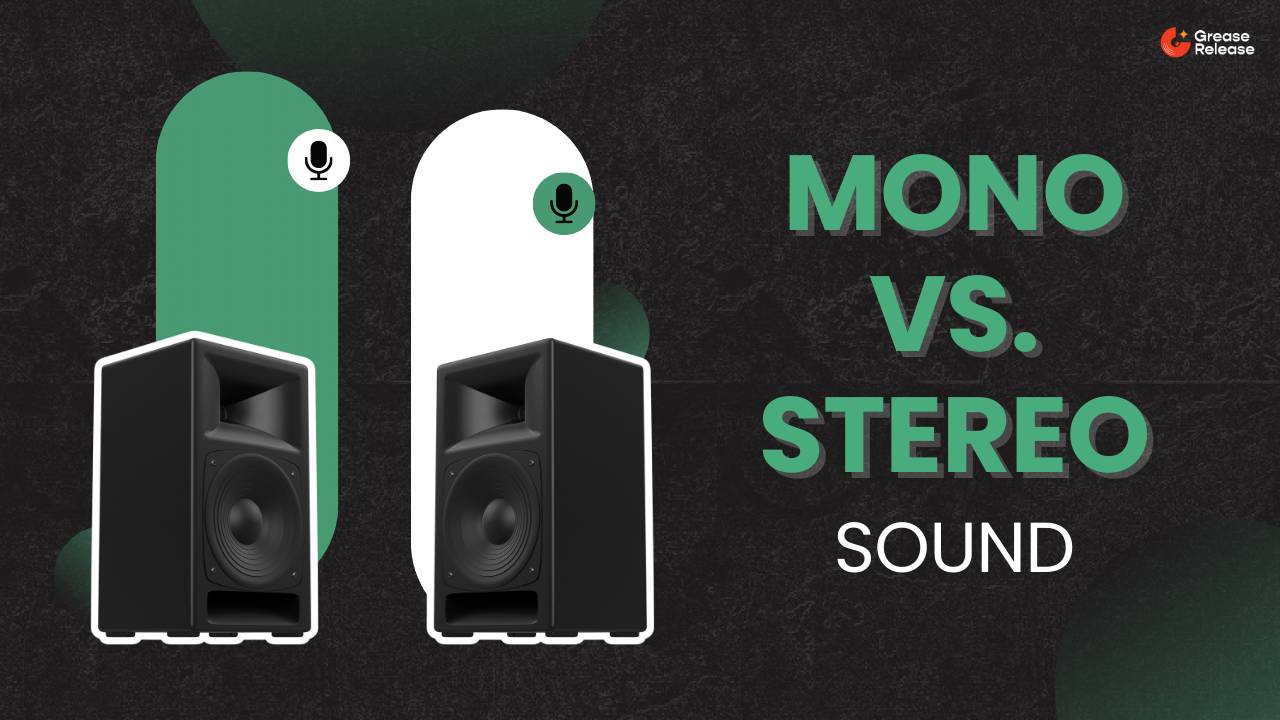
5 Most Common Chord Progressions For Writing A Song
Oct 16, 20255 Most Common Chord Progressions For Writing A Song
If you’re learning how to start writing a song, understanding these progressions will completely change how you approach songwriting. They give your melody structure, emotional flow, and that irresistible “catchy” factor that keeps listeners hooked.
In this guide, we’ll explore the 5 most common chord progressions that form the backbone of countless songs across genres. We’ll break each one down on how it works, why it works, and how you can make it your own. And at the very end we’ve also got a quick refresher on everything you need to know about the basics of chord progressions.
- The 5 Most Common Chord Progressions
- How to Choose the Right Progression
- Quick Refresher: Understanding Chord Progressions
- Final Thoughts
The 5 Most Common Chord Progressions
Now that we’ve got the basics down, let’s explore the five powerhouses that dominate the songwriting world.
Whether you’re writing pop, rock, blues, or ballads, these progressions will give you a reliable framework to start from.
1. I – V – vi – IV (The Pop Progression)
Example in C major: C – G – Am – F
Arguably the most famous of all, this progression has powered countless hits across decades. It has a perfect blend of emotional lift and resolution, making it ideal for choruses and anthemic moments.
Why it works:
The I–V–vi–IV progression moves through major and minor chords in a way that keeps the ear interested but always resolves satisfyingly. It balances brightness (major chords) with melancholy (the vi minor), which makes it emotionally versatile.
Famous songs using this progression:
- “Let It Be” – The Beatles
- “Someone Like You” – Adele
- “With or Without You” – U2
- “No Such Thing” – John Mayer
How to use it: Use it in your chorus to make your melody soar. If you want a slightly darker or more introspective tone, start on the vi (Am in this case) to get vi–IV–I–V instead.
Pro Tip: If your chorus feels flat, try swapping your chords for this progression. It’s one of the easiest ways to make your melody instantly memorable.
2. I – IV – vi – V (The Uplifting Pop/Rock Progression)
Example in C major: C – F – Am – G
This one feels a bit more open and optimistic. By moving to the IV early, you create a sense of upward motion and hopefulness.
Why it works:
It starts with strength (I), rises with IV, dips into emotion with vi, and resolves confidently with V. It’s a favorite for pop-rock and folk-inspired tracks.
Famous songs:
- “She Will Be Loved” – Maroon 5
- “No Woman No Cry” – Bob Marley
- “Complicated” – Avril Lavigne
How to use it: Perfect for verses or pre-choruses that lead into emotional hooks. Pair it with storytelling lyrics for that heartfelt singer-songwriter vibe.
Pro Tip: To give this progression freshness, use rhythmic variation or arpeggiated patterns on the guitar or piano.
3. I – vi – IV – V (The 50s Progression)
Example in C major: C – Am – F – G
The I–vi–IV–V progression dominated early pop and rock music. It’s nostalgic, easy on the ears, and immediately recognizable.
Why it works:
The switch to vi (minor) after the tonic gives it that emotional pull—like joy tinged with longing. Then IV–V creates a smooth lift back to I.
Famous songs:
- “Stand By Me” – Ben E. King
- “Earth Angel” – The Penguins
- “Every Breath You Take” – The Police
How to use it: This progression shines in ballads or romantic songs. Use soft instrumentation or harmonized vocals to bring out its vintage charm.
Pro Tip: Try turning this into a modern pop feel by adding a subtle rhythmic groove or syncopation.
4. I – IV – V (The Rock & Roll Progression)
Example in C major: C – F – G
Simple, powerful, and timeless, this progression is the foundation of rock, blues, and country. You can play hundreds of classic hits with just these three chords.
Why it works:
It’s direct and driving. The IV–V movement builds energy, and returning to I gives that sense of homecoming that keeps listeners grounded.
Famous songs:
- “La Bamba” – Ritchie Valens
- “Twist and Shout” – The Beatles
- “Johnny B. Goode” – Chuck Berry
How to use it: Perfect for upbeat, energetic songs. Works great on guitar, especially with power chords. Add distortion or shuffle rhythm for instant rock flavour.
Pro Tip: Experiment with tempo, slow it down for blues or speed it up for punk-inspired energy.
5. ii – V – I (The Jazz Progression)
Example in C major: Dm – G – C
This progression defines jazz harmony, but it’s also common in pop, soul, and R&B. It’s elegant, smooth, and endlessly adaptable.
Why it works:
The motion from ii to V creates a strong “pull” toward I. It’s a perfect example of functional harmony at work, giving a natural sense of tension and release.
Famous songs:
- “Autumn Leaves” – Jazz Standard
- “Blue Bossa” – Kenny Dorham
- Countless jazz ballads and improvisations
How to use it: Use it for bridges, turnarounds, or intros to give your song a touch of sophistication. If you’re learning how to write chord progressions, mastering this one will instantly elevate your songwriting vocabulary.
Pro Tip: Add 7th, 9th, or 13th chords to make this progression sound lush and modern.
How to Choose the Right Progression
Knowing progressions is one thing, and choosing the right one is another. Each has a distinct emotional palette and works better in specific contexts.
A. Based on Genre & Emotion
- Pop / Emotional: I–V–vi–IV or I–vi–IV–V
- Rock / Upbeat: I–IV–V
- Jazz / Soul: ii–V–I
Let the lyrics and mood guide your choice. The chord progression should always enhance the song’s emotion.
B. Based on Song Section
- Verse: Use I–IV–V or I–vi–IV–V for storytelling
- Chorus: Go for I–V–vi–IV for maximum impact
- Bridge: Try ii–V–I or modulate to a new key for contrast
If you’re figuring out how to start writing a song, think of each section as a different emotional chapter. Choose progressions that move the story forward.
Quick Refresher: Understanding Chord Progressions
Before we dive in, let’s get the basics clear.
1. What Is a Chord Progression?
At its simplest, a chord progression is just a sequence of chords played in a particular order that repeats or evolves throughout your song. It’s what gives music its sense of movement and emotion. Once you grasp that, you will understand that even a few chords can create limitless possibilities.
Pro Tip: When in doubt, start with three or four chords. Simplicity often leads to the most memorable songs.
2. Roman Numeral Notation (and Why It’s Useful)
Instead of referring to specific chords (like C–G–Am–F), musicians use Roman numerals to represent chords relative to the key.
- I = the tonic (root chord, or “home”)
- IV = subdominant (movement or lift)
- V = dominant (tension, leads back home)
- vi = relative minor (emotional contrast)
For example, in C major:
I = C, IV = F, V = G, vi = Am.
This system makes it easy to transpose progressions into any key and understand patterns universally, a crucial skill if you’re learning how to write chord progressions efficiently.
3. Major, Minor, and Functional Roles
- Every chord in a key has a “function”:
- Tonic (I or vi) – home base, feels resolved
- Subdominant (IV) – builds movement
- Dominant (V) – creates tension, leads back to tonic
When combined in specific patterns, these roles make up the most common chord progressions used in modern music.
Pro Tip: Think of chord progressions as conversations: tension (V) asks a question, and resolution (I) answers it.
Final Thoughts
There’s a reason these five are the most common chord progressions in modern music - because they simply work.
But remember, progressions are tools, not rules. What makes your song stand out is how you play, arrange, and emote through them. If you’re ever stuck on how to start writing a song, pick one of these progressions and loop it. Hum over it, try different melodies, and let your creativity take over.
Once you’re comfortable, move on to learning how to write chord progressions from scratch, experimenting with borrowed chords, modes, and modulations. With these progressions under your fingers, you’ve already unlocked 80% of what makes great songs tick. Now it’s time to make them yours.
The next hit you write might just start with one of these simple, powerful progressions, so grab your instrument and start experimenting!
We at GreaseRelease, have a bunch of curators on our network who are looking for new & exciting music to push on their massive playlists. If you make music and want to reach a wider audience, check out our submission platform and get a chance to reach millions of listeners! Submit your tracks now!
Don't miss my newsletter!
Join me on a music entrepreneurship journey with new tips and tricks delivered straight to your inbox.
We hate SPAM. We will never sell your information, for any reason.




